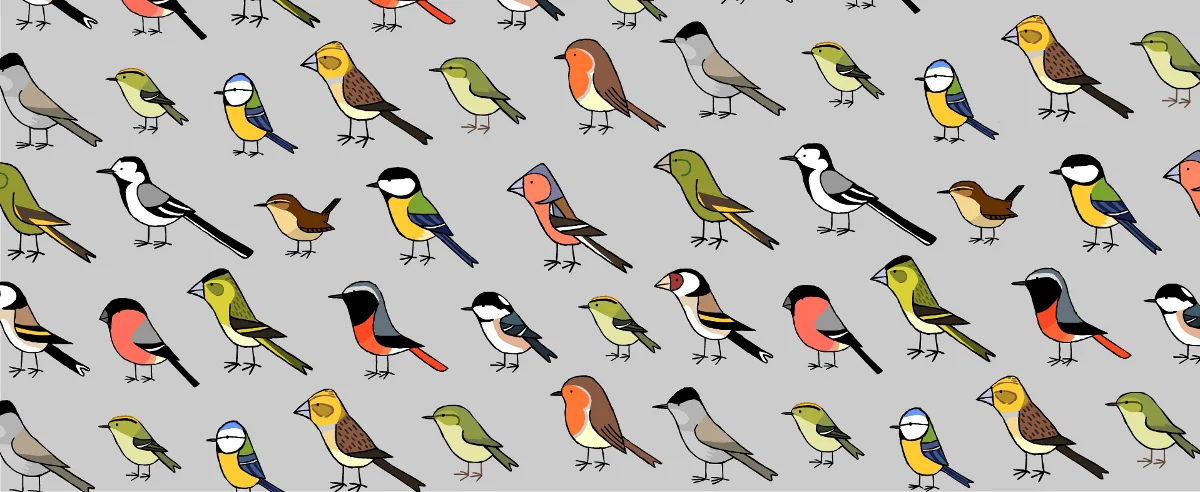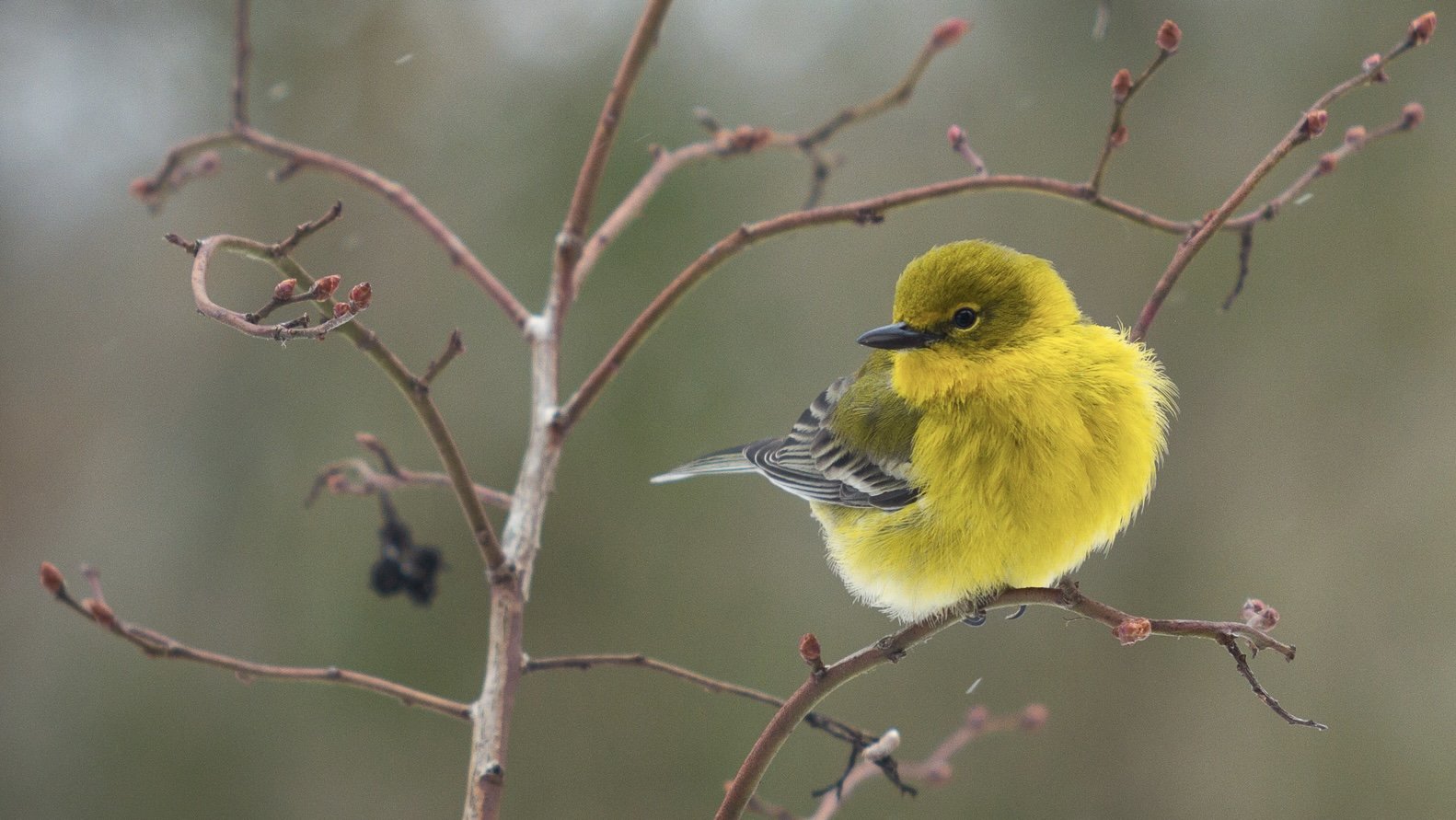Birds and Cold Temperatures
With sustained winter temperatures and the arrival of snow showers, it is easy to look outside your window on a snowy January day and feel sorry for your feathered friends as they sit out in the elements, feathers puffed against the cold, seemingly staring back in at you. To this we say; “they are just fine!” The songbirds that call our backyards home are actually surprisingly hardy, and today we would like to try and help put your mind at ease if you are worrying about your avian neighbors.
Carolina Chickadee
Photo Credit: Eli Haislip
Birds are a good deal tougher than they may appear, and they have several adaptations to help them survive the cold. During the day, as many of you have noticed, they will consume a great deal of food. (The saying “eat like a bird” is pretty inaccurate!) As much as it may seem like it, they are not doing it simply to ensure that you visit us twice a week, or buy the 20 pound safflower! The real reason is because they must take in food to make up for the calories they expend both searching for food, and maintaining their core temperature. Us humans maintain an internal temperature of around 98.6 degrees fahrenheit. Our backyard birds, however, keep an internal temperature of closer to 105 degrees fahrenheit. This higher body temperature is good for cold weather, but it requires a lot of calories to maintain. For example, a chickadee may eat as much as 35% of its body weight per day just to survive!
White-breasted Nuthatch with Black-oil Sunflower Seed
Photo Credit: Eli Haislip
Another way they are able to combat the cold is with their feathers. Have you ever seen a bird on a cold winter day with its feathers puffed out? By doing this, they are expanding their layers of insulation, helping to more effectively block out the cold. If you have ever worn or used one, you know just how effective a down jacket or sleeping bag is. Now, imagine this paired with a body with a temperature that is 7 degrees warmer than our own?
Pine Warbler
Photo Credit: Eli Haislip
Okay, but what about at night? How do they survive bitterly cold nights? Different birds can accomplish this in different ways. Night time can be a balancing act for birds, as they are expending energy to stay warm in the colder temperatures, but not replacing the calories they burn in order to stay warm with the intake of more food. This is another reason that they feed so voraciously during the day. They must take in enough food to have an energy surplus; enough to cover their daytime body functions as well as enough to last them until dawn. Birds that are cavity nesting species, such as Carolina Chickadees, Tufted Titmice, Eastern Bluebirds, and woodpeckers will find natural cavities to spend the night in, sometimes in groups. (In last week’s blog, we discussed how groups of as many as 8-12 bluebirds will all bundle into nesting boxes on cold winter nights to keep warm.) By sheltering in a cavity, these birds are already at an advantage. They are out of the wind, and, if it’s a small cavity, any body heat that escapes their layers of feathers will help to warm the small space and not be wasted. Some species, such as Black-capped Chickadees, will actually lower their core body temperature at night, entering a state of controlled hypothermia. This way, they can conserve energy by not keeping their core temperature at it’s daytime level. Non-cavity nesting species will look for areas that are sheltered from the elements, such as dense brush, bushes, or evergreens. While in no way comfortable by our standards, by puffing their feathers out and shivering to generate warmth, birds are quite capable of surviving even bitterly cold nights.
It is also worth keeping in mind that many of our favorite feeder birds can also be found in winter hundreds, and in some cases even thousands, of miles further north than us. Our small Downy Woodpeckers, for instance, can be found year round as far north as Alaska and northern Canada. Even our little Carolina Chickadees can be found as far north as Ohio and Pennsylvania. All this being said, next time you look outside your window on a cold day and see a cute bird with its feathers puffed out and snowflakes blowing around it, don’t feel sorry for it! These impressive animals are perfectly adapted to this habitat and are doing just fine!
Seed Stock, Weather, and roosting pockets
While we were able to get two pallets of seed from our secondary seed source out of Kentucky before the snow hit, it might be worth giving us a call, or checking our website, to make sure we have the seed that you need! We will be open Saturday, January 11th, however depending on road conditions, our hours may vary slightly so if you are unsure, or driving from a ways away, give us a call first! All seed stock levels will be back to normal by early next week.
These small, natural woven fiber shelters offer small birds such as Carolina Chickadees and Carolina Wrens a place to seek shelter from cold and inclement weather. I have personally witnessed Carolina Wrens bundling into these small shelters before dusk on cold nights and before big storms move in. They are most effective if you can position them somewhere sheltered and protected, such as on a porch, patio, or carport. Eastern Bluebirds too will take advantage of nesting boxes to survive cold nights. Shortly before dark, they will pile into the box in numbers as high as 8-12 individuals and then use their soft, insulating down feathers and one another’s body heat to survive frigid nights. This is yet another reason we tell people that today is the best time to put up a bluebird box.
Roosting Pockets: Top Shelf $15, Lower $7











